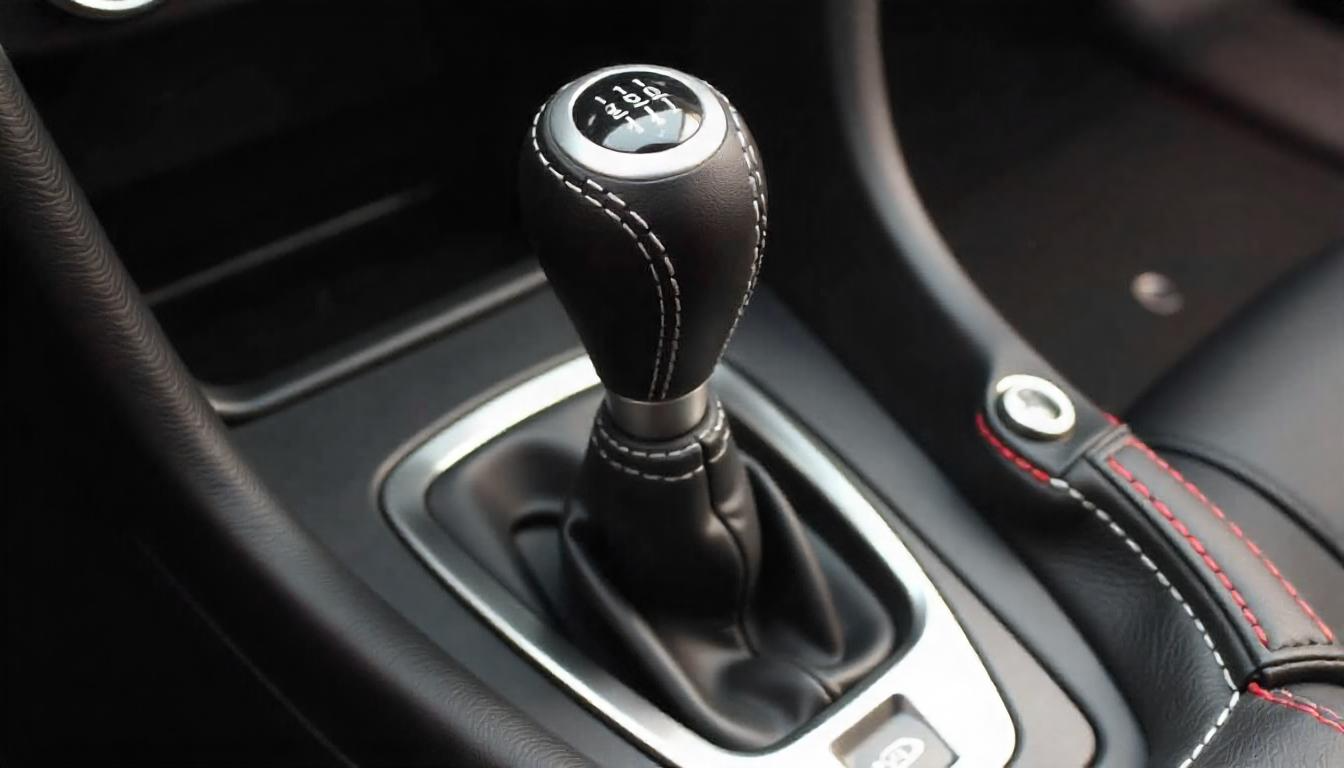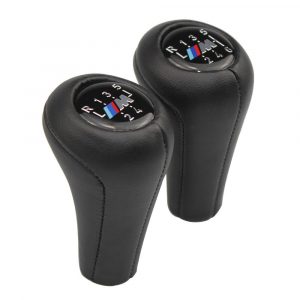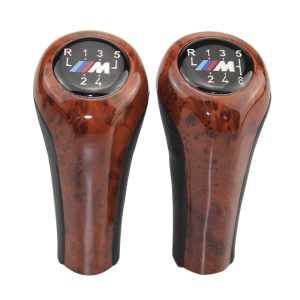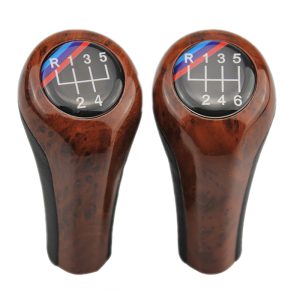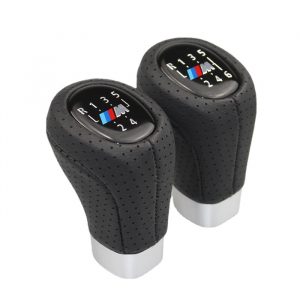A shift knob is an essential part of a vehicle’s gear stick, allowing drivers to change gears smoothly. While it may seem like a small detail, the material of a shift knob can greatly impact comfort, durability, and overall driving experience. Different materials have been used over the years, each with its advantages and disadvantages. Let’s see the most common shift knob materials and their features.
1. Leather Shift Knobs
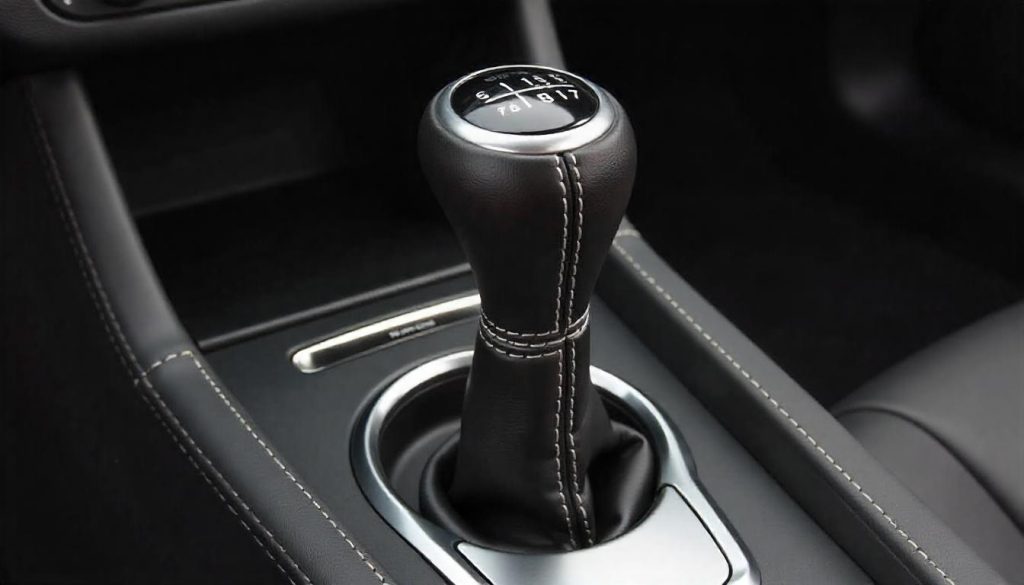
Leather shift knobs are popular in luxury and sports cars due to their premium feel and comfortable grip.
- Tactile Comfort: Leather offers a soft, warm grip, making it ideal for luxury and sports cars.
- Thermal Insulation: Maintains a comfortable temperature, avoiding the extremes of metal knobs.
- Aesthetic Appeal: Available in various colors and finishes, enhancing the interior’s sophistication.
Pros:
- Soft and comfortable to hold
- Provides a warm touch in cold weather
- Stylish and available in various colors
Cons:
- Can wear out over time, especially with constant use
- Requires regular maintenance to prevent cracking or fading
Example: High-end brands like BMW, Mercedes-Benz, and Audi often use leather shift knobs in their premium models.
External Resource: How to Maintain a Leather Shift Knob
2. Aluminum Shift Knobs
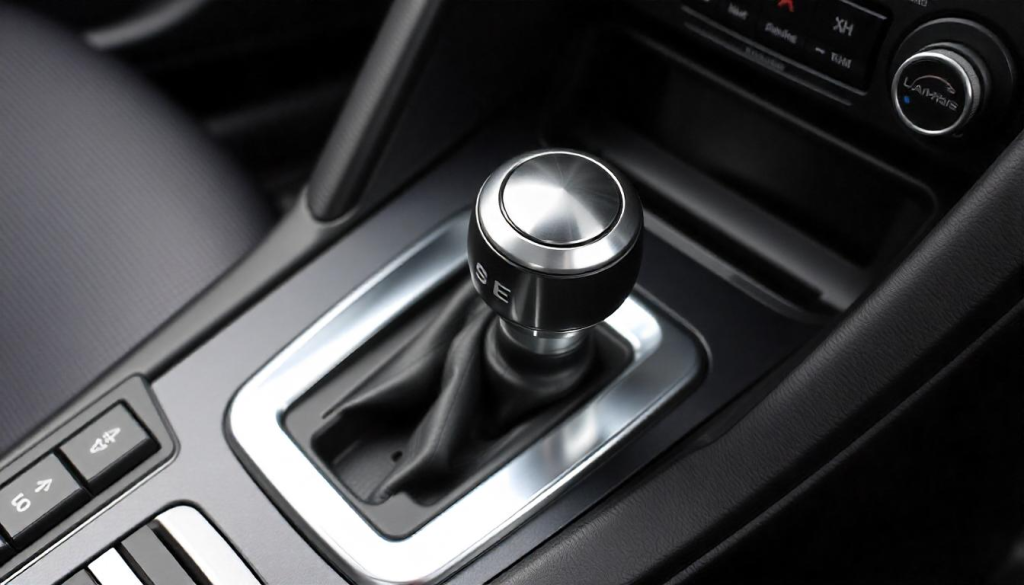
Aluminum shift knobs are common in performance cars because they provide a solid, sporty feel.
- Weight Advantage: Lightweight yet durable, aluminum reduces shift effort and improves precision.
- Aesthetic Appeal: Polished or anodized finishes offer a sleek, modern look.
Performance Insights:
- Thermal Conductivity: Surface temperatures can reach 68.3°C in direct sunlight, but ceramic coatings can reduce this by 27%.
- Durability: Anodized aluminum resists corrosion and wear, making it a popular choice for performance cars.
Pros:
- Extremely durable and long-lasting
- Lightweight, making shifting quick and precise
- Stylish and often used in modern racing cars
Cons:
- Can become very hot in summer and extremely cold in winter
- Hard surfaces may feel uncomfortable during long drives
Example: Many aftermarket shift knobs, such as MOMO and NRG, offer aluminum options for car enthusiasts.
3. Carbon Fiber Shift Knobs
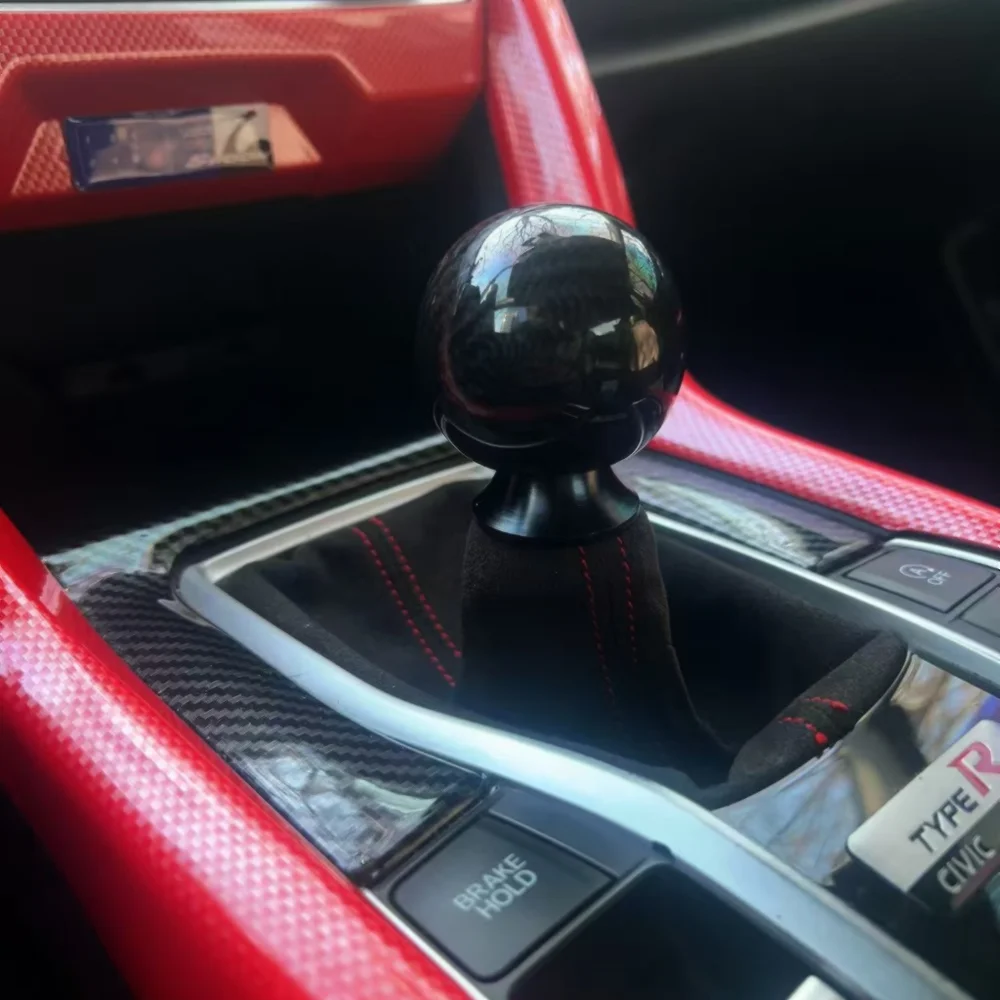
Carbon fiber shift knobs are a modern choice, often found in high-performance and sports cars.
Key Features:
Weight Reduction: Carbon fiber knobs are ultra-lightweight, reducing shift effort by up to 19%.
Strength: High tensile strength and resistance to wear make them ideal for high-performance vehicles.
Performance Insights:
Vibration Damping: Carbon fiber reduces vibrations by 14% compared to aluminum.
Cost: Higher production costs due to advanced manufacturing techniques.
Pros:
- Extremely lightweight, reducing effort when shifting gears
- Strong and resistant to wear
- Sleek, modern, and stylish
Cons:
- Can be expensive compared to other materials
- Surface can be slippery if not textured properly
Example: Supercars like Lamborghini and Ferrari feature carbon fiber interior components, including shift knobs.
External Resource: What is Carbon Fiber?
4. Wooden Shift Knobs
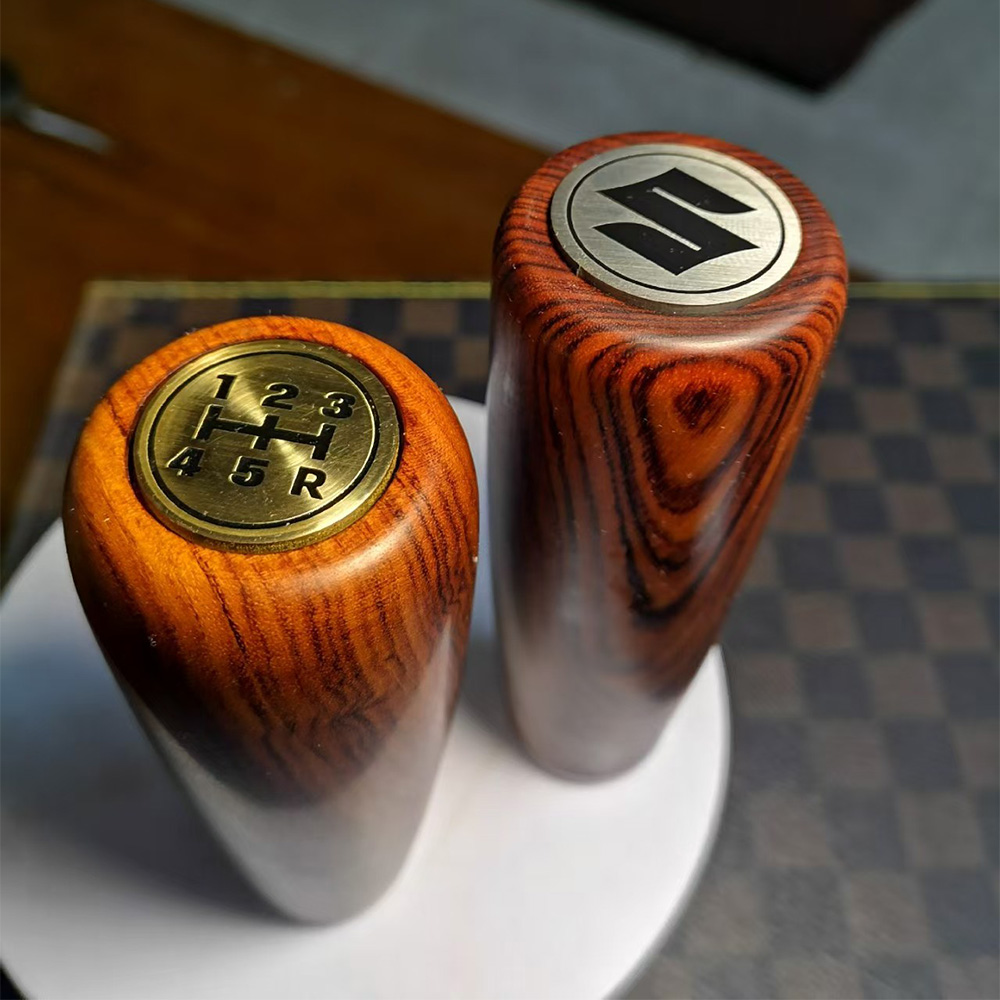
Wooden shift knobs are often found in vintage and classic cars, offering a retro and elegant look.
Key Features:
Classic Aesthetic: Wood offers a timeless, elegant look, perfect for vintage and classic cars.
Thermal Comfort: Wood maintains a neutral temperature, avoiding the extremes of metal knobs.
Performance Insights:
Durability: Stabilized wood, such as walnut or ebony, resists warping and scratching.
Maintenance: Requires periodic polishing to maintain its luster.
Pros:
- Aesthetically pleasing with a classic touch
- Can be customized with unique wood grains and finishes
- Comfortable to hold as wood does not get too hot or too cold
Cons:
- Can be prone to scratches and fading over time
- May not fit well with modern car interiors
Example: Classic cars like the Jaguar E-Type and some Porsche models feature wooden shift knobs.
5. Plastic Shift Knobs
Plastic shift knobs are the most common and affordable type, typically found in economy cars.
Key Features:
Affordability: Plastic knobs are cost-effective and easy to manufacture.
Customization: Available in various colors and designs to suit different vehicle interiors.
Performance Insights:
Durability: Less durable than other materials, prone to wear over time.
Weight: Lightweight but lacks the premium feel of metal or leather.
Pros:
- Cheap and easy to manufacture
- Available in many styles and colors
- Lightweight and easy to replace
Cons:
- Less durable compared to other materials
- Can feel cheap and lack a premium feel
Example: Many mass-market vehicles like the Toyota Corolla and Honda Civic come with plastic shift knobs.
Which Shift Knob Material is Best?
| Material | Pros | Cons | Best For |
|---|---|---|---|
| Leather | Soft, comfortable, warm in cold weather, stylish | Wears out over time, requires maintenance | Luxury and sports cars |
| Aluminum | Durable, lightweight, sporty | Hot in summer, cold in winter | Performance cars |
| Carbon Fiber | Lightweight, strong, modern | Expensive, can be slippery | High-performance vehicles |
| Wood | Classic, neutral temperature, elegant | Prone to scratches, needs polishing | Vintage and classic cars |
| Plastic | Affordable, lightweight, customizable | Less durable, lacks premium feel | Economy cars |
The best shift knob material depends on personal preference and driving needs:
- For luxury and comfort: Leather
- For performance and durability: Aluminum or carbon fiber
- For a classic look: Wood
- For affordability: Plastic
Regardless of the material, maintaining a shift knob properly can extend its lifespan and improve your driving experience. If you are considering upgrading your shift knob, ensure that it is compatible with your car’s transmission and fits securely.
Would you like to replace your shift knob? Share your thoughts on what material suits your style the most.
No related posts.

